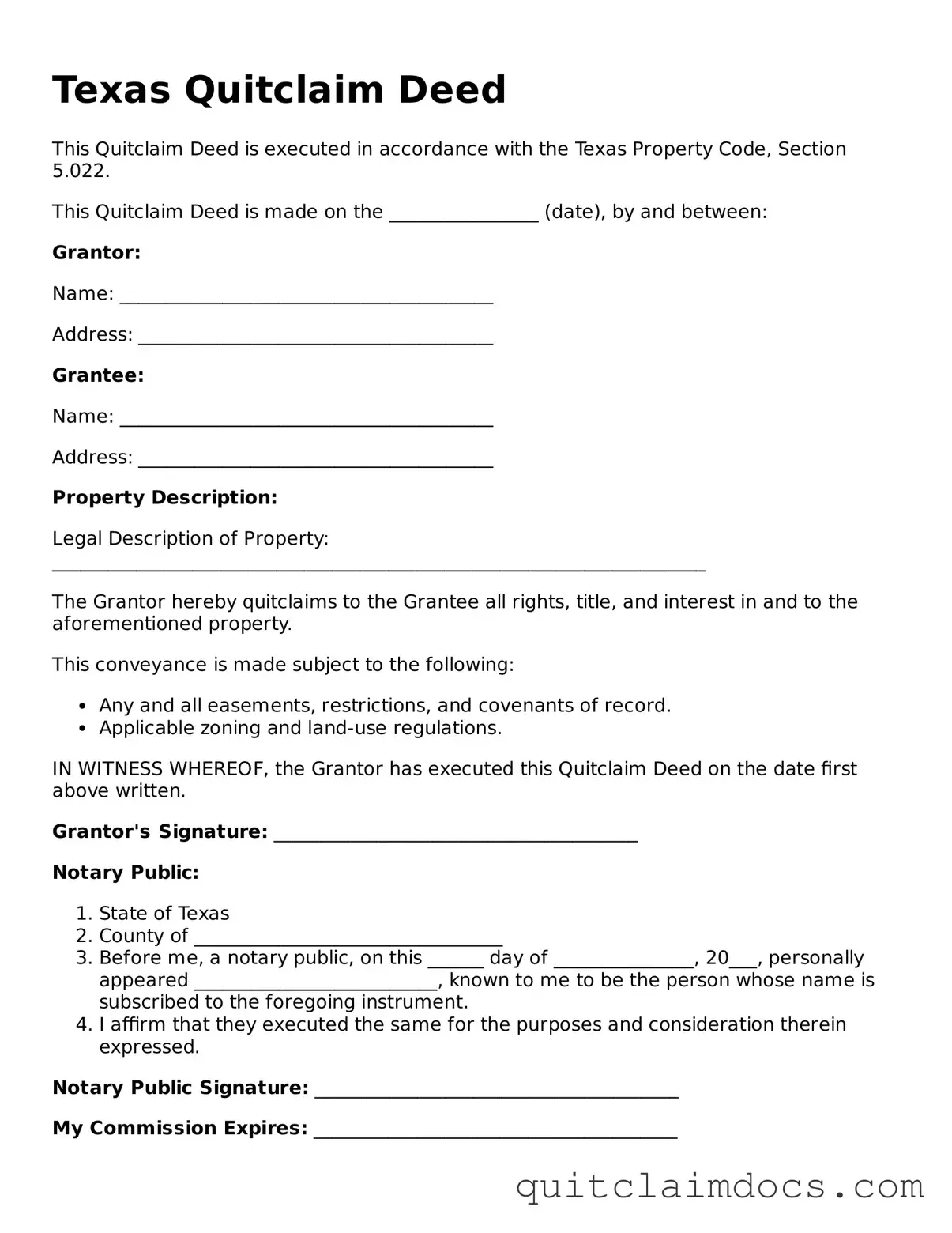Texas Quitclaim Deed
This Quitclaim Deed is executed in accordance with the Texas Property Code, Section 5.022.
This Quitclaim Deed is made on the ________________ (date), by and between:
Grantor:
Name: ________________________________________
Address: ______________________________________
Grantee:
Name: ________________________________________
Address: ______________________________________
Property Description:
Legal Description of Property: ______________________________________________________________________
The Grantor hereby quitclaims to the Grantee all rights, title, and interest in and to the aforementioned property.
This conveyance is made subject to the following:
- Any and all easements, restrictions, and covenants of record.
- Applicable zoning and land-use regulations.
IN WITNESS WHEREOF, the Grantor has executed this Quitclaim Deed on the date first above written.
Grantor's Signature: _______________________________________
Notary Public:
- State of Texas
- County of _________________________________
- Before me, a notary public, on this ______ day of _______________, 20___, personally appeared __________________________, known to me to be the person whose name is subscribed to the foregoing instrument.
- I affirm that they executed the same for the purposes and consideration therein expressed.
Notary Public Signature: _______________________________________
My Commission Expires: _______________________________________
